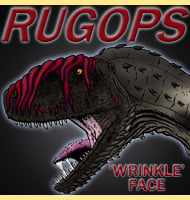Rugops
In Depth Rugops, meaning ‘wrinkle face’, is an interesting name for a carnivorous dinosaur. This name comes from the numerous impressions in the skull bone from large blood vessels that once ran across the bone surface leaving a wrinkled appearance. It is thought that these extra vessels were here to provide additional oxygenated blood to … Read more
